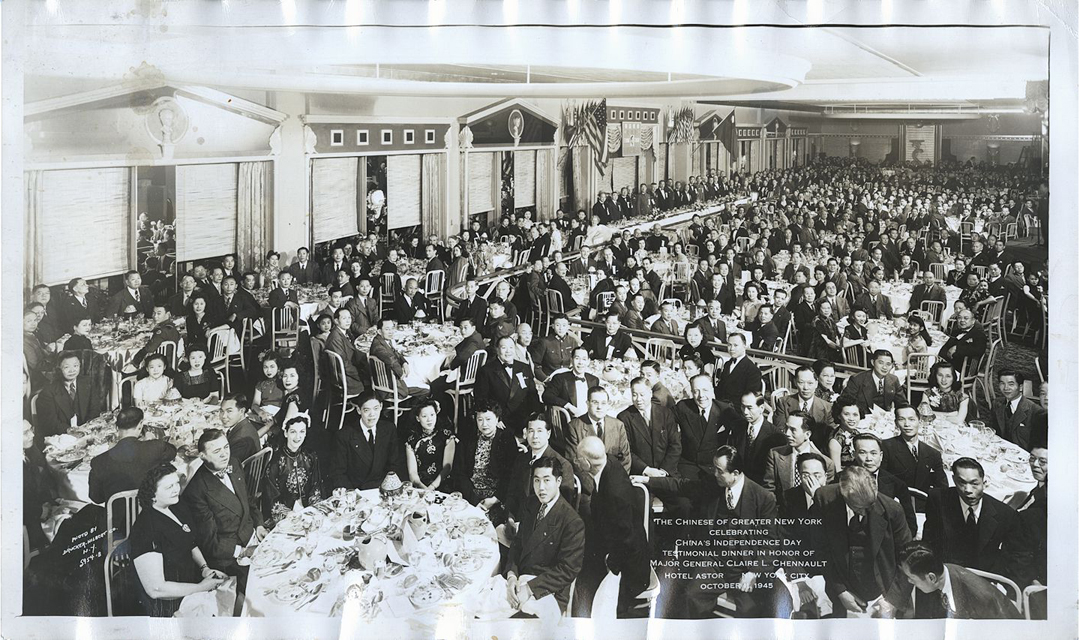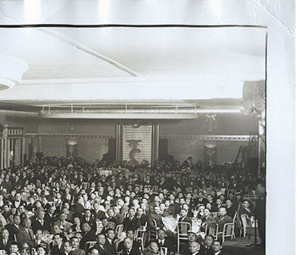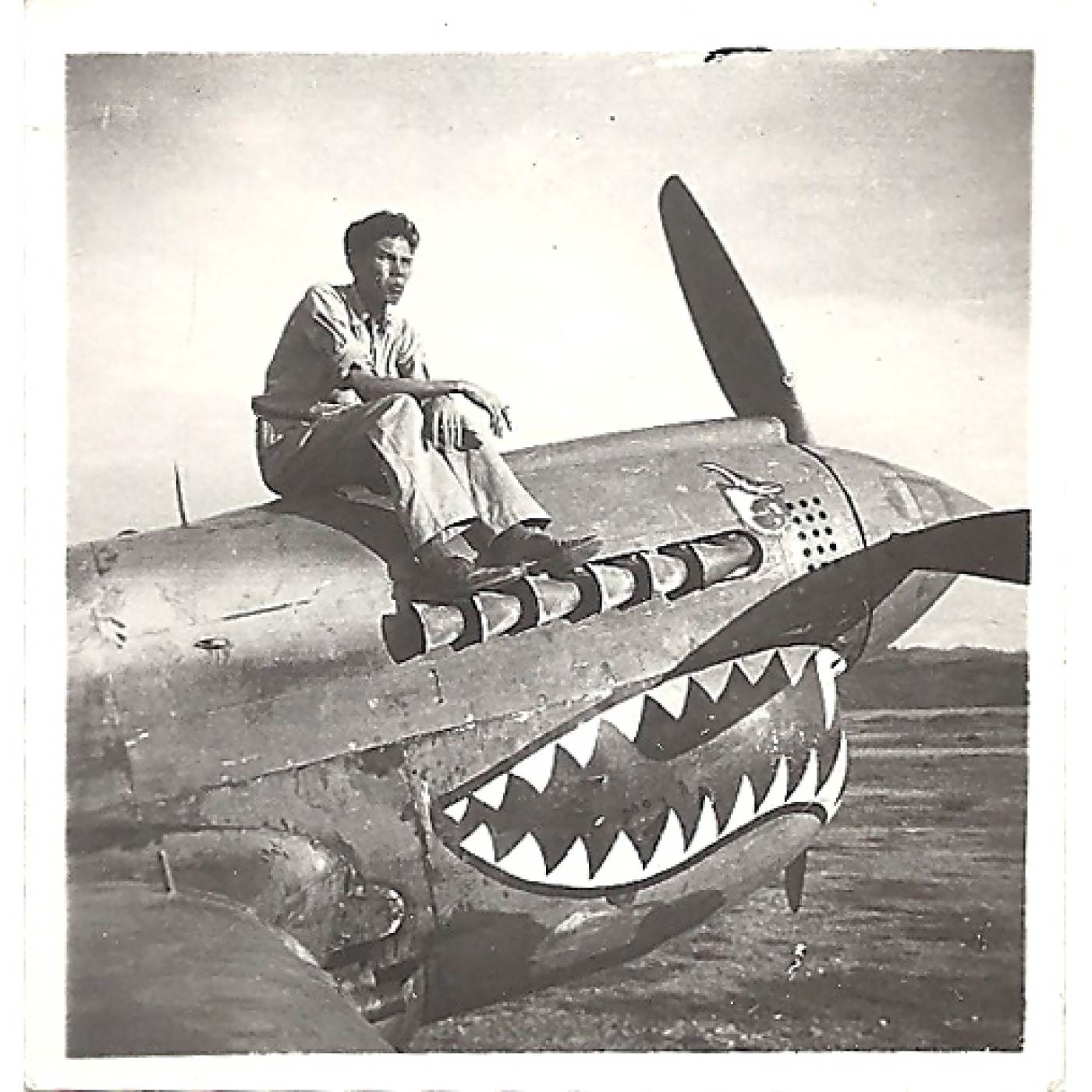In the above photograph, taken on October 11, 1945, Chinese Americans are gathered in a grand ballroom of Time Square’s lavish Hotel Astor to honor Major General Claire L. Chennault for his service to the United States and China as commander of the legendary “Flying Tigers.” The “Flying Tigers” began as the American Volunteer Group, a rag tag air combat wing comprised of 84 former U.S. military pilots flying volunteer missions in 43 serviceable P-40B fighters with tiger sharks’ jaws painted on the front fuselage (see photograph below). Chennault, who had retired from the U.S. military in 1937 and was serving as Chiang Kai-shek’s aviation advisor in China during the Sino-Japanese war, conceived of the unit in the summer of 1941 with the idea that if strategically targeted, Japan could be defeated in China “by an Air Force so small that in other theaters it would be called ridiculous.” After Pearl Harbor drew the United States into the war, Chennault rejoined the U.S. military and was promoted and given command of the 14th Air Force, tasked with protecting vital supply lines from Burma into China and providing critical air support for the Chinese army. With skill and valor in the face of numerically superior forces, the 14th Air Force is credited with destroying 2,315 Japanese aircraft with a force that grew from 200 to 700 planes by the end of the war.
Chinese Americans from all across the country served in the 14th Air Force, including Jerry Chang from Chicago, IL; Chin B. Chee of Newark, NJ; Gim S. Chin of Oakland, CA; Wing G. Lee of Portland, OR; Keng D. Lem of Wichita, KS; Hing B. Lo of St. Loius, MO; Jimmy Louie of Los Angeles, CA; Nosolom Leong of San Francisco, CA; Yuen Y. Lim of Detroit, MI; Edwin K. Len of New York, NY; and Kenneth P. Moy, photographed below in China in 1944 sitting atop a shark jawed fighter plane.
Also being celebrated at the banquet was the anniversary of China’s Independence Day (October 1, 1911, a day marking the fall of the Qing dynasty and Sun Yat-sen’s founding of China as a republic). With the official surrender of Japan on September 2, 1945 and the return of seized territory to China after more than 15 years, that year’s marking of China’s Independence must have had added significance for Chinese and Chinese Americans in attendance.




